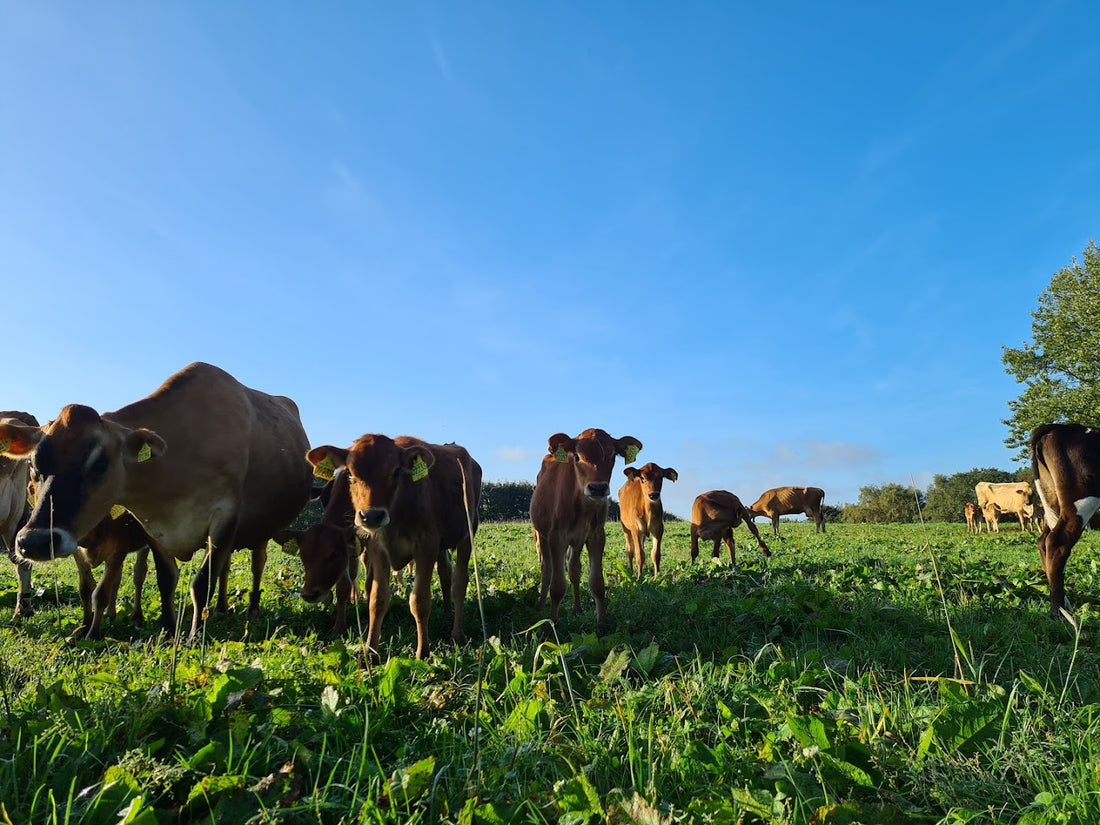Tips for cow-calf contact in a robotic barn
Consumers are increasingly interested in the conditions under which calves are raised and how well they can fulfil their natural behavioural needs. In the eyes of the consumer, prolonged cow-calf contact (=CCC) is a positive thing, and it is therefore fairly certain that it will increase in the coming years. In this case, the calf is either cared for by its own mother or by a foster cow.
Dam or foster cow?
There are two ways of prolonged cow-calf contact: either the calf can be by its own dam or foster cows can be used. A foster cow can care for 2-4 calves. The use of the own dam does not require any further calculation of the number of calvings. However, the use of foster cows may not work in a smaller unit. In a foster cow system, it is recommended that the whole group of calves is placed under a foster cow with the smallest possible age range.

Be prepared for weaning in a large bedding area or in your own building
Building and extending a large bedded pack area behind the robot area will make it easier to organize CCC. Naturally, the longer you aim to provide CCC period, the larger the area required. To avoid the bedded pack area becoming a work camp for cleaning and bedding, a good rule of thumb is to have 20 to 25 square metres of area per cow and calf. On top of this, of course, you need the square metres required for the manure alley.
One option is to grow calves with foster cows, you call separate building a "foster cow barn". The bedded pack area is divided by gates into pens, which take into account both calf and cow feeding and easy cleaning and bedding of the pack area. In the foster cow barn, cows do not visit the milking robot.
One future scenario could be to have a separate cow barn, where cows are with their own calves, together with other cows and calves. Cows have 24 / 7 access to a milking robot.

Gates and fences to suite CCC
The robotic barn itself has a wide variety of gates and fences. These allow for smooth working as the animals move from one area to another, either independently or under human guidance. For longer periods of CCC, the gates and fences need to be rethought in a whole new way. Existing robot orientations are well suited to the traditional system, but CCC management may bring with it the need to develop completely new orientations. In a bedded pack area, the fencing must be designed so that the calf cannot escape to the wrong side of the group. In some situations, it may be necessary to temporarily separate mother and calf. This must be able to be done by one person in a safe and secure manner with the gates.

Calf and dam in their own pen
The calf and the dam need some peace and quiet during the first few days. Individual calving pens can be used for this purpose. A good calving pen is at least 15 square metres in size and easily accessible to the worker. Square pens work best, so that any cow in a next pen cannot reach out and disturb the dam and calf. In addition, the pen should have a fetching area where the dam can be easily reached, either for the calf or for a procedure on the dam.
Rethink your calf management practices
Calf care changes in many ways when the conventional raising of calves is replaced by the use of a own dam or foster cows. Calves and dams need to be actively observed on a daily basis and a good eye and interest on the part of the carer is the only tool to ensure successful CCC. It is important to identify and choose a practice that suits you and to select the appropriate structural solutions to keep the workload under control. There are many options: does the cow have free access to the robotic milking during CCC? Do you want the calves to drink something else during the CCC and how do you organise this? At what stage and in what way should weaning take place?

More questions than answers
In many ways, we are at the beginning of the journey when it comes to combining robotic milking and CCC. There is little actual research on the subject and good practice is needed to make it easier for farms to switch to CCC if they wish to do so. At present, there are more questions than answers. What are the key factors for organising the conditions and structures of a robotic barn in such a way that the practical and economic implementation of CCC makes sense. That is why 4dBarn is heavily involved in the latest research projects and practical developments!

